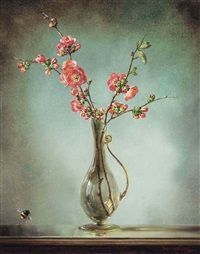Cecil Kennedy and his Bees
Before we look at a very exquiste painting that came in the mail bag this week, I am delighted to welcome our first subscriber from Austria. A very warm welcome to R.V. in Vienna who has joined our on-line Art4Life community.
In the mail bag this week I received, from an anonymous UK subscriber to our blog, an email about a painting by the British still life artist Cecil Kennedy.
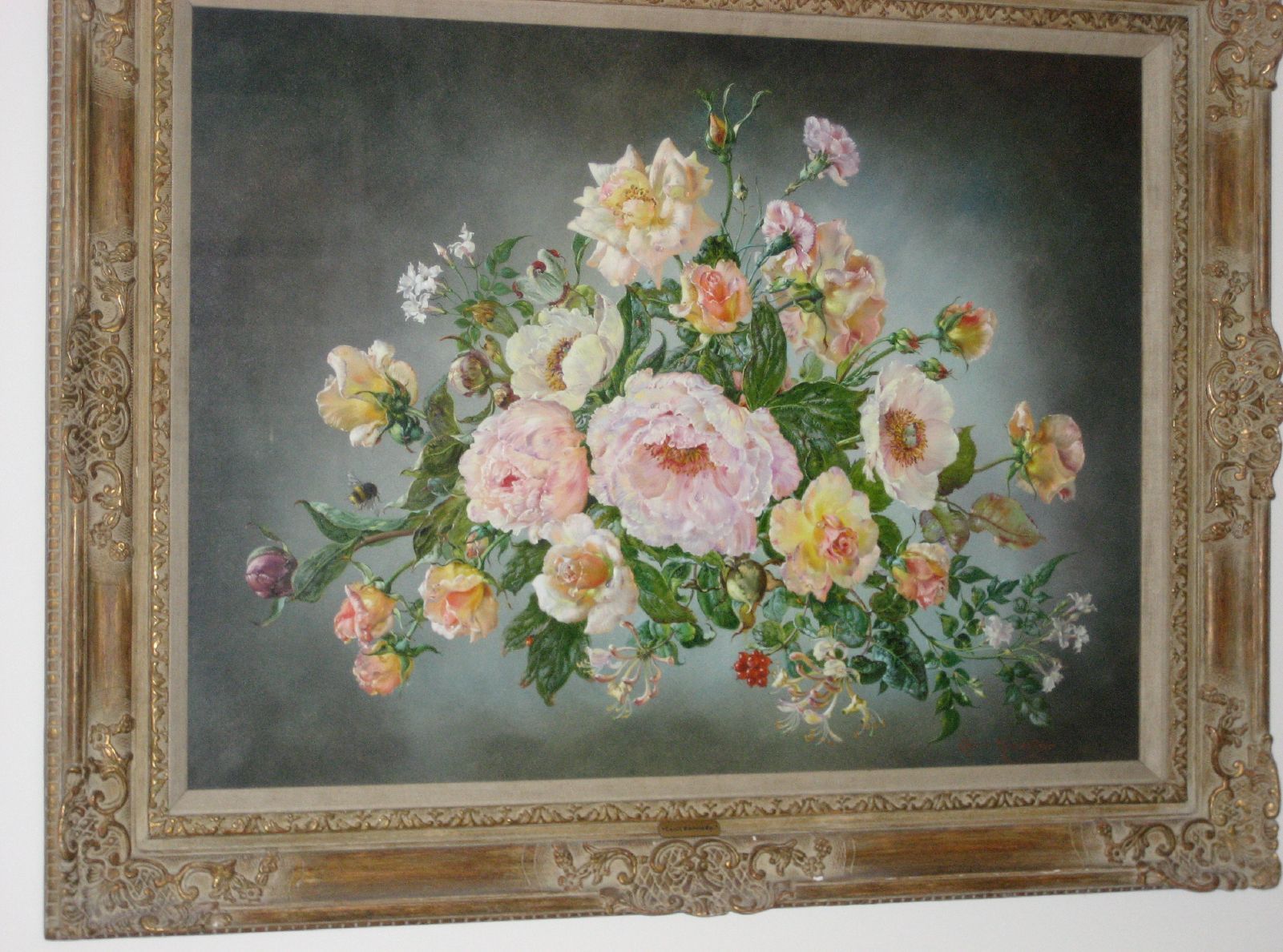
You will notice amongst the glorious flowers, exquistely painted in oils, a bumble bee.
According to the subscriber Cecil Kennedy always painted a bumblebee or a ladybird in his pictures. The reason is explained like this:
Cecil Kennedy was preparing a painting for a prestigious exhibition of his work. One painting got damaged - a small hole. So he painted a bumble bee and stuck it over the hole. Queen Mary came to the exhibition: “Oh, Mr Kennedy, how clever you are - even the bees like your flowers” and ever after he included a bee - sometimes a ladybird.
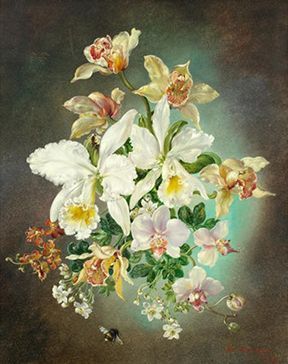
British artist Cecil Kennedy (1905- 1997) will be best remembered for his minutely detailed depictions of flowers, though he also worked as a portraitist. His greatest works are admired for their exquisite detail and artful compositions, and many of these were produced during the 1960’s.
His wife Winifred created the brilliant flower arrangements, usually in a vase from their collection of mid-eighteenth century Waterford vases, which continually inspired his work. (artnet.com)
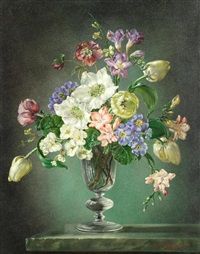
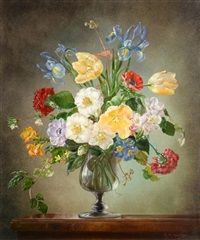
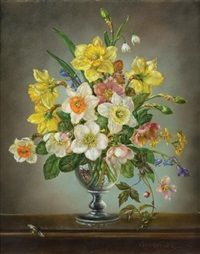
Kennedy was born into a large artistic Victorian family. He was the youngest of thirteen children. His grandfather was an artist who had lived in France, sketched with Jean Baptiste Camille Corot (1796-1875) and exchanged drawings with him. His father was a landscape painter and four of his brothers were artists. His brother Charles, who died in the influenza epidemic of 1918, was a particular influence on him. In the early thirties he met and married Winifred Aves. She became his inspiration and for sixty-four years they worked together as a creative team. (artnet.com)
Not all of Cecil Kennedy's paintings have bees or ladybirds so I am thinking these are his earlier works before the accident to the painting and before meeting Queen Mary.
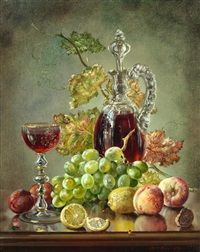
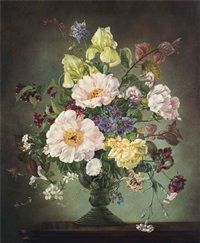
In the Second World War Kennedy was called up and fought in the British Army in Europe. He was in Antwerp during the winter of 1944 where he sought out and befriended Flemish painters. It was a time for reflection, and studying Flemish and Dutch still life paintings in their natural setting brought about a definite change in his painting style. He maintained contact with Flemish artists up to his death. (artnet.com.au)
Lord Thompson of Fleet, a friend and patron, wrote about him and commented that "his pictures conveyed a joy of life and artistic creativity."(artnet.com)
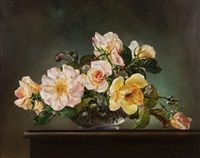
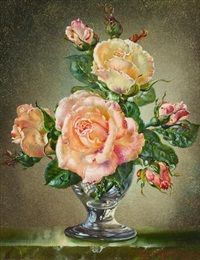
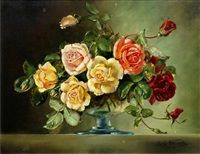
Kennedy was considered unsurpassed in the genre of flower painting, blending botanical accuracy and sensual effects. Kennedy’s artful juxtapositions of modern exotic hybrids blooms and humble favourites like field grasses, as well as the plant species celebrated in the works of the Old Masters revealed his knowledgeability as a plantsman as well as an artist.
While studying in the great national collections of the major artistic centres, London, Paris, Antwerp and Zurich, he fell under the influence of the Old Masters, from whom he derived his meticulous technique. The novelty of his all white arrangements reflected an awareness of twentieth century horticultural innovations as well such as Vita Sackville-West’s ‘white garden.’ (artnet.com)
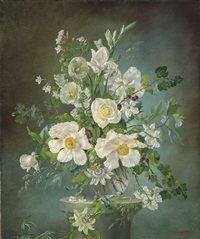
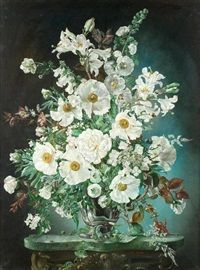
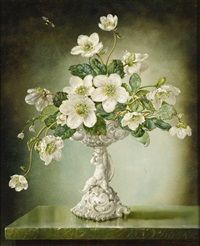
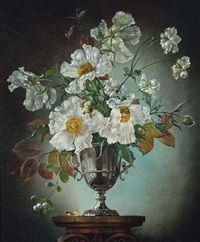
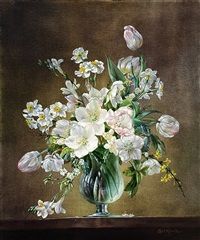
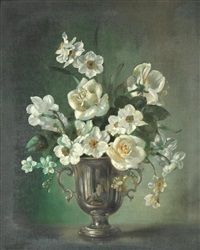
We will conclude today and say goodbye to the bees with a gloriously simple arrangement - with bumblebee.
